このページでは、Google Issue Tracker で別の問題を使用して 1 つの問題をブロックする方法について説明します。
1 つの問題が別の問題をブロックしている場合、2 つ目の問題を解決する前に、最初の問題を解決する必要があります。ブロックはトラッキングの目的でのみ使用されます。問題トラッカー自体はブロックを適用しません。問題がブロックされている未解決の問題があっても、問題を [修正済み] に設定できます。
ブロック機能は相互的です。1 つの問題を別の問題をブロックするように設定すると、1 つ目の問題は 2 つ目の問題の [Blockers] リストの 1 つとして表示され、2 つ目の問題は 1 つ目の問題の [Blocking] リストに表示されます。
ブロック関係を設定するには、両方の問題を含むコンポーネントに対する問題の編集 権限が必要です。
ブロックされた問題
問題をブロックすると、別の問題が解決されるまでその問題を解決しないことを示します。最初に解決する必要がある問題はブロックの問題で、次に解決する問題はブロックされた問題です。1 つの問題が複数の問題をブロックしたり、複数の問題にブロックされたりすることがあります。
ブロックしても、問題に実際の制限は適用されません。つまり、ブロックしている問題に変更を加えなくても、ブロックしている問題を更新またはクローズできます。そのため、ブロックはトラッキング システムまたは通知システムと見なす必要があります。ブロックされた問題への対応方法に関する決定は、問題の解決を担当する個人やチームに委ねられます。
UI の場所
ブロックは [ブロック] タブと [依存関係] タブで追跡されます。たとえば、問題 A のページに移動して問題 B をブロックするように設定すると、問題 A のページの [ブロック] タブに問題 B が表示されます。一方、問題 B のページの [依存関係] タブの [ブロック] セクションに問題 A が表示されます。
[ブロック] セクションと [ブロッカー] セクションのタイトルには、それぞれに含まれる問題の数が表示されます。/ の前の数字は未解決の問題の数で、/ の後の数字は問題の合計数です。たとえば、[ブロック] タブに 2/5 と表示されている場合、現在の問題をブロックしている問題は合計 5 件ありますが、そのうち解決されていない問題は 2 件のみです。
[依存関係] タブまたは [ブロック] タブをクリックすると、関連する問題の表が表示されます。各問題エントリには、ステータス、問題のタイトル、問題 ID など、いくつかの部分があります。
行をクリックして、その問題に移動します。
別の問題によってブロックされる問題を設定する
問題を別の問題によってブロックされている問題として設定するには:
ブロックする問題に移動します。
ページ上部のタブで [依存関係] をクリックします。
[ブロック] セクションの近くにある [ブロックを追加] をクリックします。
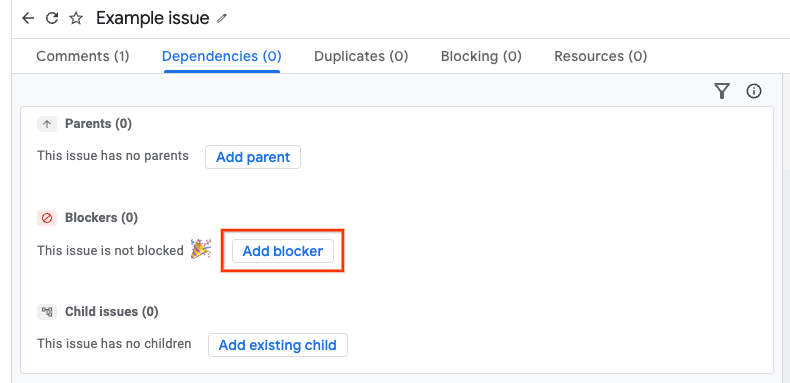
ブロックの問題を報告する方法は 2 つあります。
- オプション 1: 問題をテキスト検索する。

- オプション 2: 問題 ID を入力します。複数の ID をカンマで区切って一度に追加できます。
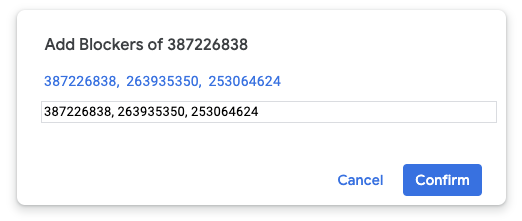
[確認] をクリックします。
問題が解決すると、ブロックの問題が [ブロック] リストに追加されます。
問題を設定して別の問題をブロックする
問題を別の問題のブロックとして設定するには:
ブロックされる問題に移動します。
ページ上部のタブで [ブロック] をクリックします。
[追加] をクリックします
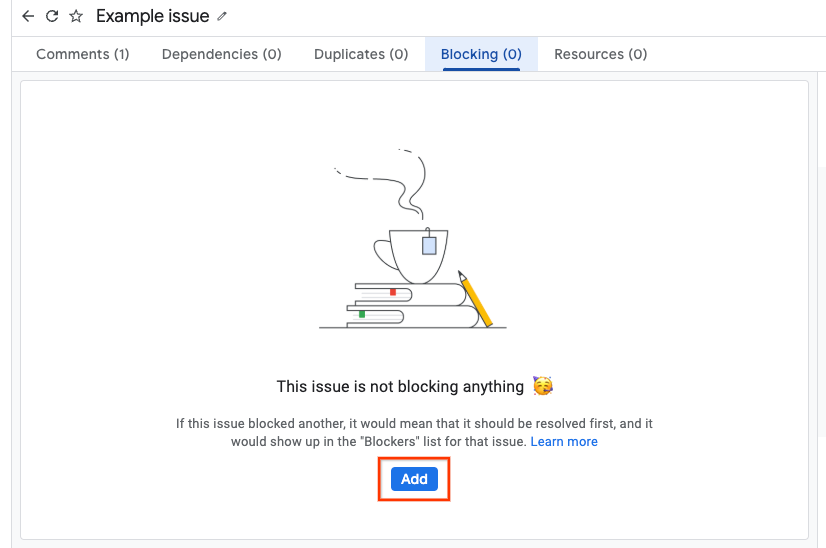
ブロックされた問題を入力するには、次の 2 つの方法があります。
- オプション 1: 問題をテキスト検索します。
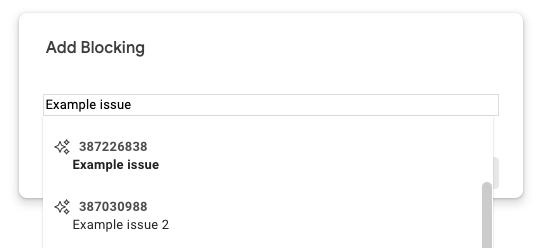
- オプション 2: 問題 ID を入力します。複数の ID をカンマで区切って一度に追加できます。
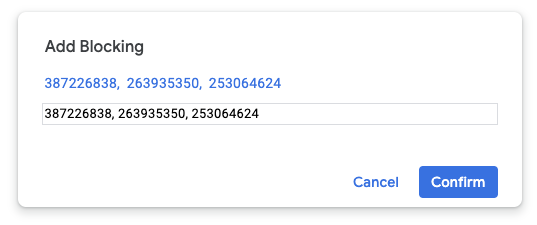
[確認] をクリックします。
正常に完了すると、ブロックされた問題が [ブロック] リストに追加されます。
